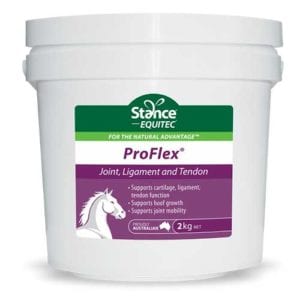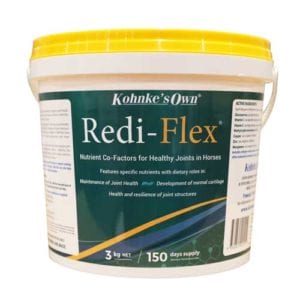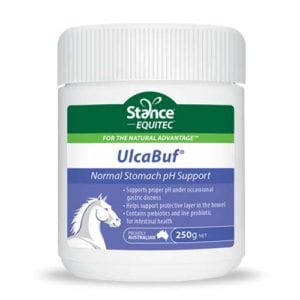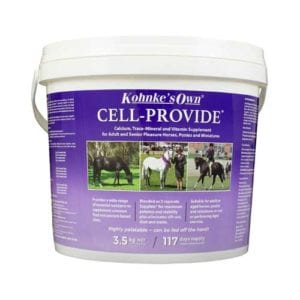Description
What is it?
Maximal respiratory function is essential for optimal athletic performance. Issues such as allergic reactions to dust/pollution and conditions such as exercise-induced pulmonary haemorrhage (EIPH) or “bleeding” can have a significant impact on lung function and the welfare of the horse. Allergic reactions to dust and debris entering the lungs results in an inflammatory response, causing mucous production and narrowing of the airways. EIPH is the escape of blood cells into the lungs from the capillaries where gas exchange occurs, and subclinical disease is extremely common.
PulmonAID is a palatable feed supplement recommended for all performance horses to support normal integrity and function of the lungs.
- Lecithin: A key component of the surfactant fluid that lines the lungs. Surfactants are important for the regulation of liquid balance within the airway, improved large airway clearance of fluid and control of pulmonary inflammatory response (e.g. during allergic reactions to dust).
- Chlorophyll: A potent antioxidant that mops up free radicals, preventing them from damaging cells, and protects against oxidative stress by inhibiting the cascade of free radicals. Chlorophyll also helps to dissolve mucous in the lungs by reducing inflammation.
- Vitamin A: An antioxidant that has a role in decreasing inflammation, alongside chlorophyll, and enhances chlorophyll’s activity.
- Vitamin E: An essential nutrient that cannot be synthesised by the horse and is a potent antioxidant that protects cell membranes from oxidative damage.
- Vitamin D3: High levels of vitamin D in the blood is linked to superior lung function (Wright 2005*).
*Wright, RJ 2005, ‘Make No Bones About It: Increasing Epidemiologic Evidence Links Vitamin D to Pulmonary Function and COPD’, Chest, vol. 128, no. 6, pp. 3781-3783.
Features & Benefits
- Maximises lung function.
- Aids in dissolving mucous.
- Improves large airway clearance of fluid.
- Controls the pulmonary inflammatory response (e.g. allergic reactions to dust).
- Palatable daily feed additive.
What is exercise-induced pulmonary haemorrhage (EIPH)?
EIPH is defined as bleeding from the lungs of horses during exercise. The condition is most frequently identified in Thoroughbred and Standardbred racehorses performing high-speed exercise, but cases can also occur in horses used for other disciplines such as western performance, eventing, show jumping and polo.
How common is EIPH?
- 43% – 75% of Thoroughbred racehorses exhibit blood within the trachea after a single tracheobronchoscopy performed within two hours of racing. The prevalence of EIPH increases to greater than 85% with repeated examinations.
- 11% to 46% of polo ponies were found to have EIPH after competition.
- The prevalence of endoscopically evident EIPH in horses performing other disciplines, such as show jumping, has not been comprehensively evaluated.
What causes EIPH?
Increased blood pressure in lungs and considerable negative pressure within pleural cavity
High-intensity exercise causes a large increase in blood pressure within the blood vessels of the lungs (pulmonary vasculature) and marked negative pressure within the pleural cavity, which is the space that lies within the pleurae, the two thin membranes that line and surround the lungs. Pulmonary arterial and venous blood pressures will increase three- to four-fold during strenuous exercise because of increased cardiac output.
Pulmonary capillary stress failure
Deep within the lung, thousands of tiny air sacs termed “alveoli” interface with capillaries, forming what is known as the blood-gas barrier. The blood-gas barrier is incredibly thin (only 50 nanometres thick!) to allow oxygen to diffuse from the alveoli into the blood. The dramatic increase in blood pressure within the lung during intense exercise places a lot of pressure on the pulmonary capillaries and causes them to rupture, termed “pulmonary capillary stress failure”.
Clinical Signs
Subclinical disease is extremely common, but some of the clinical signs associated with EIPH are:
- Poor performance
- Stopping during exercise
- Epistaxis (bleeding from the nostrils) – Severe cases of EIPH and occurs relatively infrequently in 1.1% to 3.5% of Thoroughbred and Standardbred horses after racing.
Risk Factors
- Intense exercise
- High speed exercise
- Cumulative race volume
- Age
- Steeplechase/hurdling rather than flat racing
- Cool ambient environmental temperature (<20˚C)
How can we reduce the risk of EIPH?
- Uninhibited flow of oxygen into the lungs.
- Free movement of oxygen from the airways into the blood stream.
- Minimal oxidative damage during exercise (protect against free radicals).
- Rapid recovery from effects of oxidation reactions following exercise.






